Pad See Ew – the popular Thai stir fried noodles straight from the streets of Thailand made at home! While Pad Thai is sweeter and nuttier, Pad See Ew is salty, balanced with a touch of sour and a wonderful chargrilled flavour which you can create at home!
This is a reader-favourite recipe included by popular demand in my debut cookbook “Dinner”!

Pad See Ew
Pad See Ew, which means “stir fried soy sauce noodles”, is an extremely popular Thai street food meal and one of the most popular noodles dishes at Thai restaurants here in Australia.
Making a great Pad See Ew at home simply comes down to two things:
The right sauce. Basic recipes online will instruct you to use little more than just soy sauce and sugar. It takes a little more than that!
Caramelising the noodles – Getting a little caramelisation on the noodles makes all the difference between an “ok” and “wow, it’s JUST like you get at restaurants!”.
The trick? Remove the stir fry ingredients. Cook the noodles with sauce separately. Less stuff in the wok (or skillet) = easier to caramelise the noodles. At least, at home. If you’ve got a giant restaurant wok burner, you don’t need to do the noodles separately!
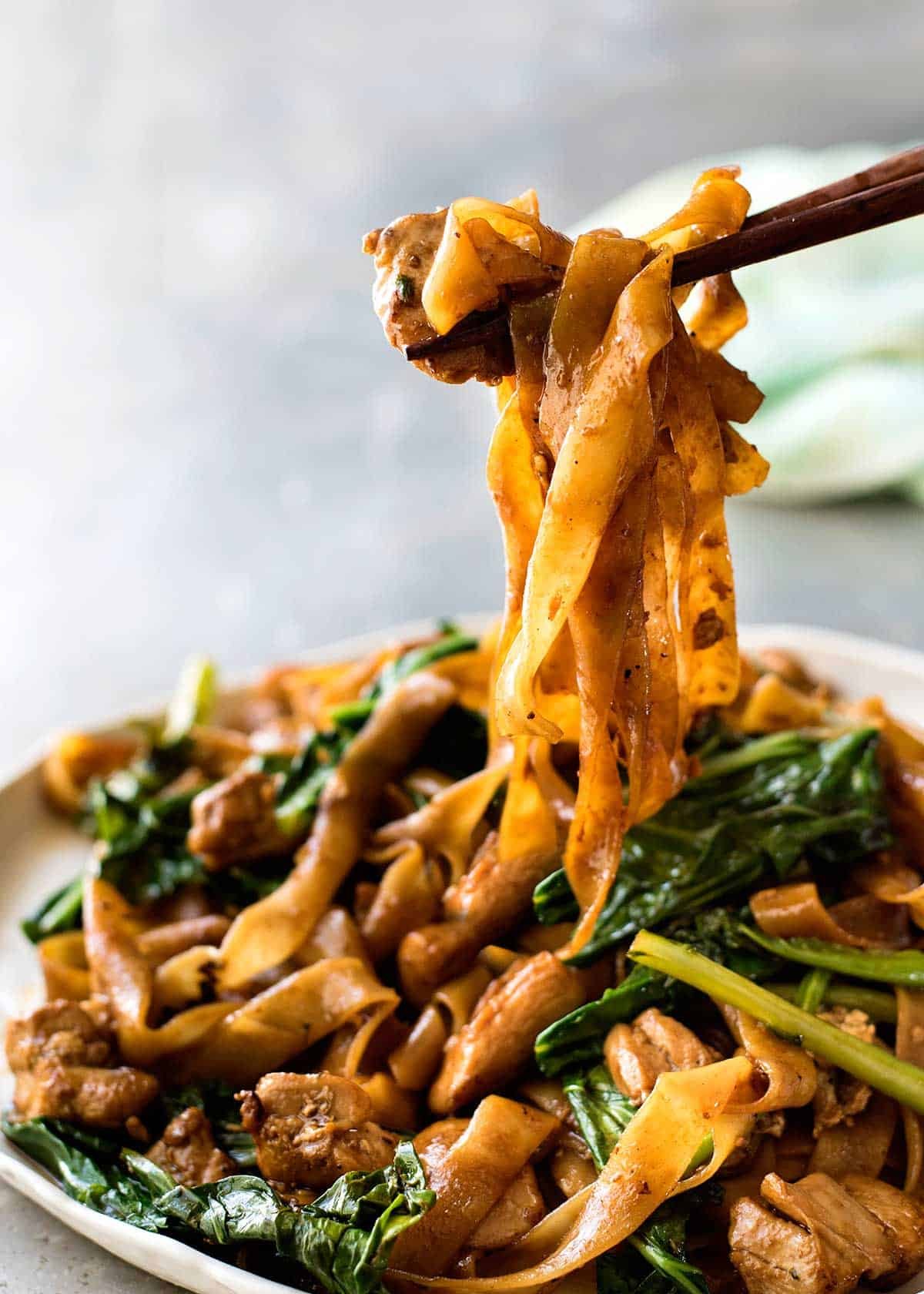
What goes in Pad See Ew
I can’t remember where I originally got the recipe from. Probably from David Thompson, the famous Australian chef who has dedicated his life to mastering the art of Thai cooking. I’ve made it so many times over the years, I can almost make it with my eyes closed. (Not really….but you know what I mean!)
So I had to actually measure the ingredients properly to share the recipe!
1. Pad See Ew Sauce ingredients
Pad See Ew has a sweet-savoury-touch-of-sour flavour, and this is made with a combination of the following ingredients:
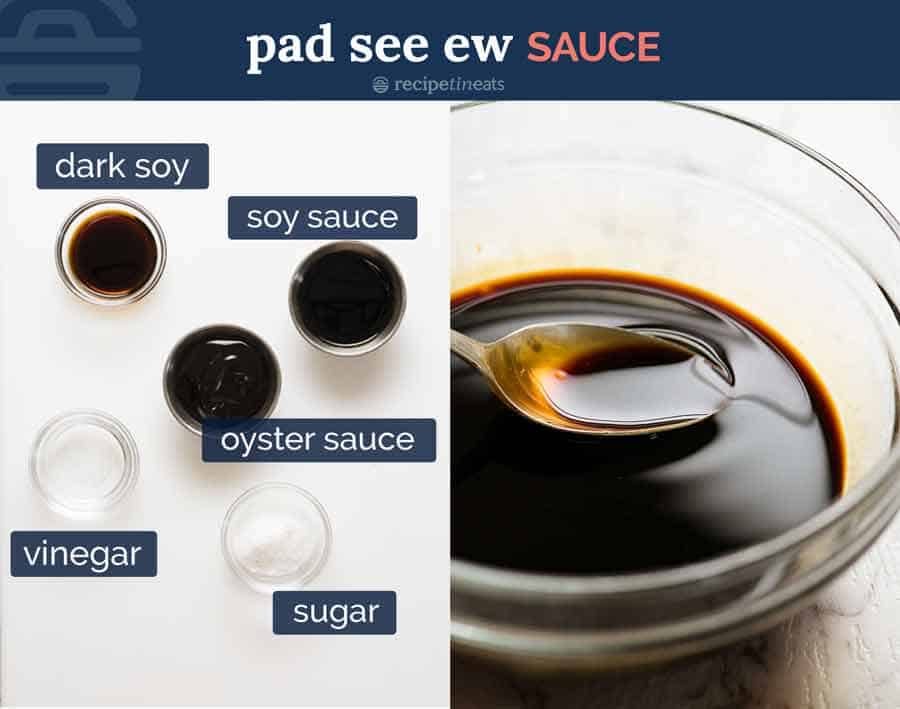
Dark soy sauce – For flavour and staining the noodles a dark brown.
Ordinary or light soy sauce – For seasoning (salt) and a bit of flavour. Most of the flavour comes from the oyster sauce and dark soy sauce. More on different soy sauces and when you can substitute with what in this About Soy Sauces post.
Oyster sauce – Key ingredient, it’s like 10 difference sauces mixed up in one bottle!
Vinegar – To balance the sweet and savoury. Some form of sour is a key ingredient in South East Asian cooking!
Sugar – For sweetness.
2. Pad See Ew ingredients
And here are the other ingredients for Pad See Ew:

Noodles – Pad See Ew is traditionally made with Sen Yai, which are wide, thin fresh rice noodles that are not easily accessible. Even most Asian stores in Sydney do not sell them – you usually need to go to a Thai grocery store.
So it is perfectly acceptable, and just as delicious, to make them with any wide flat rice noodles. I use dried rice noodles labelled as “Pad Thai” Rice Noodles (pictured below) because they are the widest available at the supermarket.
Once rehydrated, they’re essentially Sen Yai Noodles – just not quite as wide.
Chinese Broccoli / Gai Lan – This is a key authentic ingredient in Pad See Ew. Otherwise known as Gai Lan or Kai lan, it’s leafy and looks quite different to broccoli, but you’ll notice a similarity in the texture of the stems (hence the name).
If you can’t find it, just sub with other Asian greens, or a combination of broccoli or broccolini + spinach.
Chicken and egg – Feel free to use other proteins if you wish. But chicken is by far the most popular.
How to make Thai Stir Fried Noodles
Usually when making stir fried noodles, we toss everything together in one big pan or a wok.
But for Pad See Ew made at home, I do things differently to best replicate a restaurant flavour and minimise noodle breakage:
Cook chicken and vegetables first, then remove
Add noodles and sauce, toss to caramelise (just 15 seconds), then add chicken and vegetables back in.
Reason: A signature flavour in Pad See Ew is the caramelisation of the noodles. Restaurants and street vendors achieve this with super powered gas stoves with fiery heat that you’ll never find in a home kitchen. The only way to replicate that caramelisation on the noodles on a home kitchen stove is to declutter the wok and cook the noodles separately – the noodles will caramelise in 15 seconds.
The other reason is that rice noodles break if you toss them too much. Doing the two-stage toss makes it much easier and faster to disperse the sauce and bring the Pad See Ew together.
Trust me on this point. I’ve made a LOT of Pad See Ew at home in my time, and the two-stage toss it the easiest and most effective technique!

Garlic, chicken and Chinese broccoli STEMS first – Using either a wok or large skillet set over high heat, heat the oil then sauté the garlic until it goes light golden. Add the chicken then once it mostly changes from pink to white, add the Chinese broccoli stems which take longer to cook than the leafy part.
Once the chicken is cooked (it should only take 2 to 3 minutes), toss the Chinese broccoli leaves in and cook for 30 seconds or so just until wilted.
Push everything to the side to make room to scramble the eggs on the side. This is the traditional Thai way of scrambling eggs in Pad See Ew!
Crack egg straight into the wok.
Scramble egg – Then mix to scramble it. Speed is of the essence here – we want scrambled egg not a sunny side up egg!
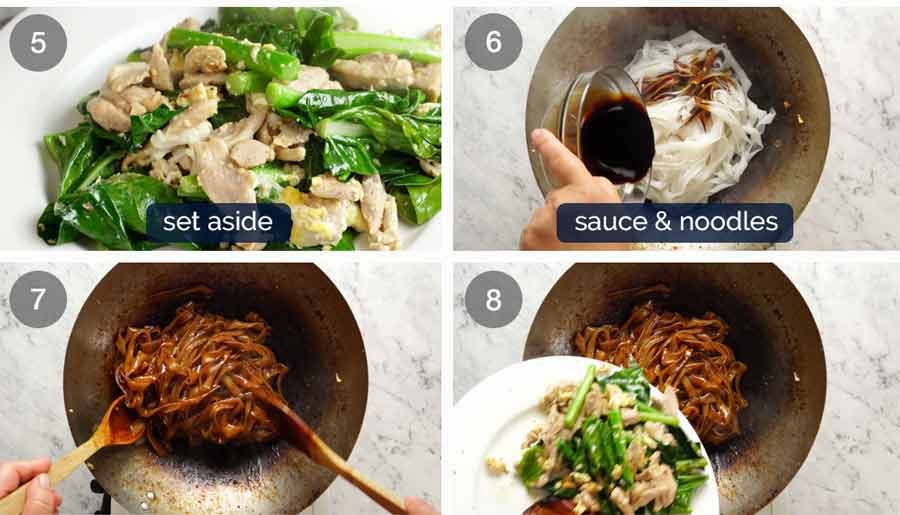
Empty wok – Remove the chicken and vegetables onto plate. As mentioned above, the best way to cook Pad See Ew at home is to cook the noodles separately so we can get some nice caramelisation on them. If we don’t do this, then the noodles just stew instead of caramelising.
Add noodles and sauce into the wok.
Toss quickly for 1 to 1 1/2 minutes until the sauce is dispersed throughout the noodles and you see some caramelisation on the edges.
PRO TIP: You want to be quick here because the longer and more you toss, the more noodle breakage you have. You’ll notice restaurants typically toss the noodles in the wok without using a wooden spoon or other tool for stirring – this too helps to minimise noodle breakage.
A note on Noodle Breakage – That said, you WILL get some noodle breakage, and that is normal / perfectly acceptable. Ever notice how the wide, flat noodles in Pad See Ew served at Thai restaurants are not long strands? That’s just the way it is. In fact, traditionally, Pad See Ew is served in Thailand with a FORK or spoon instead of noodles for ease of eating.
Add chicken and veg back in – Once the noodles are caramelised, add the chicken and vegetables back in. Give it a quick toss just to disperse, then serve!

As with all stir fries, once you start cooking, it moves very fast! So have everything prepared and ready to throw into the wok because there’s not time to be scrambling around the kitchen!
If you want to add a fresh side, try this Asian Slaw – it’s a great all rounder that goes with all Asian foods. – Nagi x
Watch how to make it
This recipe features in my debut cookbook Dinner. The book is mostly new recipes, but this is a reader favourite included by popular demand!
Hungry for more? Subscribe to my newsletter and follow along on Facebook, Pinterest and Instagram for all of the latest updates.
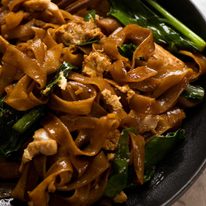
Pad See Ew – Thai Stir Fried Noodles
Ingredients
Noodles
- 200g / 7 oz dried wide rice stick noodles , or 15 oz / 450g fresh wide flat rice noodles (Sen Yai) (Note 1)
Sauce
- 2 tsp dark soy sauce (Note 2)
- 1 1/2 tbsp oyster sauce
- 1 tbsp light soy sauce (or all purpose, Note 3)
- 2 tsp white vinegar (plain white vinegar)
- 2 tsp sugar (any type)
Stir Fry
- 3 tbsp peanut or vegetable oil , separated
- 2 cloves garlic cloves, very finely chopped
- 1 cup / 150g / 5oz chicken thighs (boneless, skinless), sliced (Note 4)
- 1 large egg
- 4 stems Chinese broccoli (Note 5)
Instructions
Preparation:
- Chinese Broccoli – trim ends, cut into 7.5cm/3" pieces. Separate leaves from stems. Cut thick stems in half vertically so they're no wider than 0.8cm / 0.3" thick.
- Noodles – Prepare according to packet directions and drain. Time it so they’re cooked just before using – do not leave cooked rice noodles lying around, they break in the wok.
- Sauce – Mix ingredients until sugar dissolves.
Cooking:
- Heat oil: Heat 1 tbsp oil in a very large heavy based skillet or wok over high heat.
- Cook garlic and chicken: Add garlic, cook 15 seconds. Add chicken, cook until it mostly changes from pink to white.
- Chinese broccoli STEMS: Add Chinese broccoli stems, cook until chicken is almost cooked through.
- Chinese broccoli LEAVES: Add Chinese broccoli leaves, cook until just wilted.
- Scramble egg: Push everything to one side, crack egg in and scramble.
- REMOVE chicken from wok: Remove everything in the wok onto a plate (scrape wok clean).
- Caramelise noodles: Return wok to stove, heat 2 tbsp oil over high heat until it starts smoking (HOT is key!). Add noodles and Sauce. Toss as few times as possible to disperse Sauce and make edges of noodles caramelise – about 1 to 1 1/2 minutes.
- Add chicken back in: Quickly add chicken and veg back in, and toss to disperse. Serve immediately!
Recipe Notes:
Nutrition Information:
Originally published 2014, updated 2016. Updated over the course of the years with improved photos, the addition of ingredients and process photos as well as a recipe video. Recipe also updated with a more effective cooking method – cooking the ingredients in two batches. No change to ingredients, but yields a better caramelisation and easier to cook – read in post for explanation.
MORE THAI TAKEOUT FAVOURITES
Love noodles? Me too! See my entire Noodle recipes collection.
Life of Dozer
When Dozer ate a VERY spicy piece of chilli biltong!!

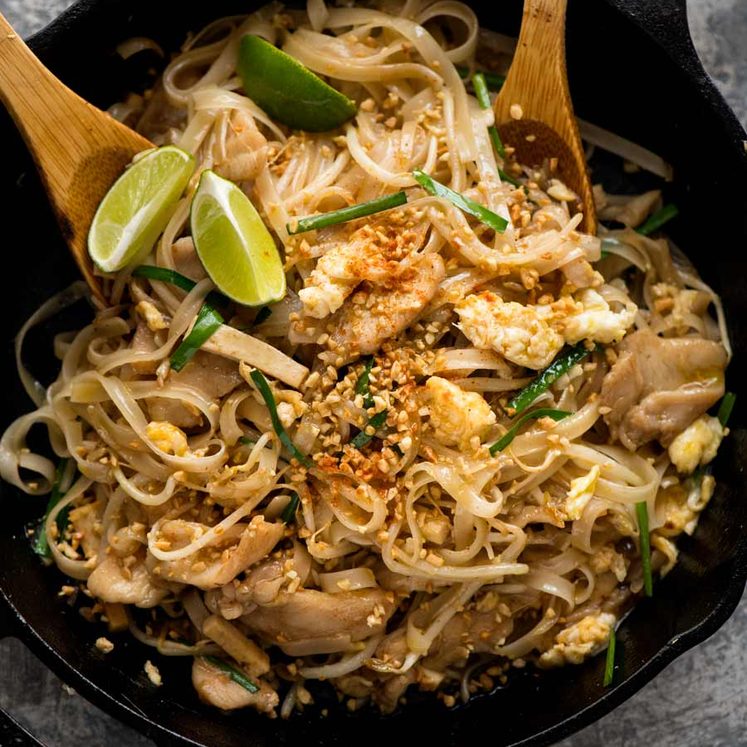
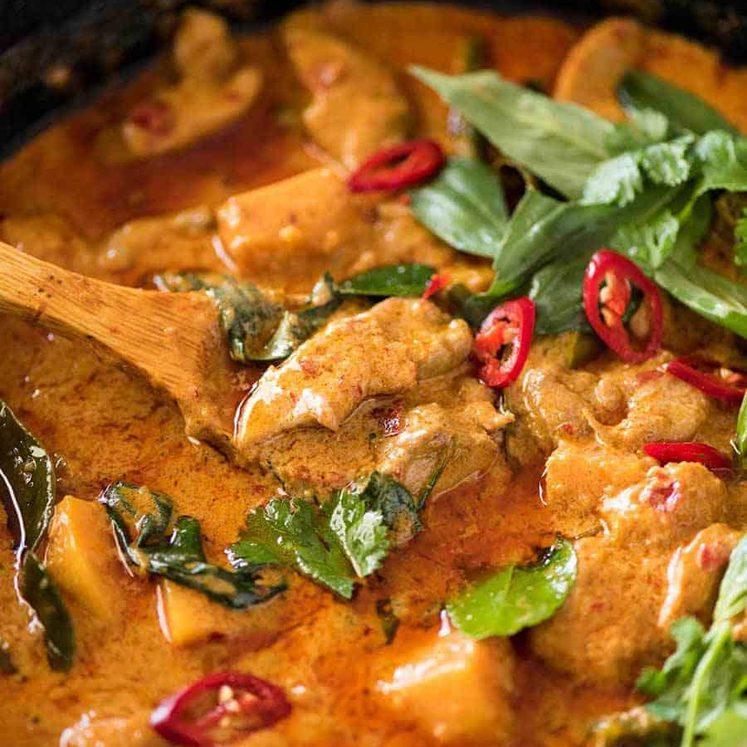
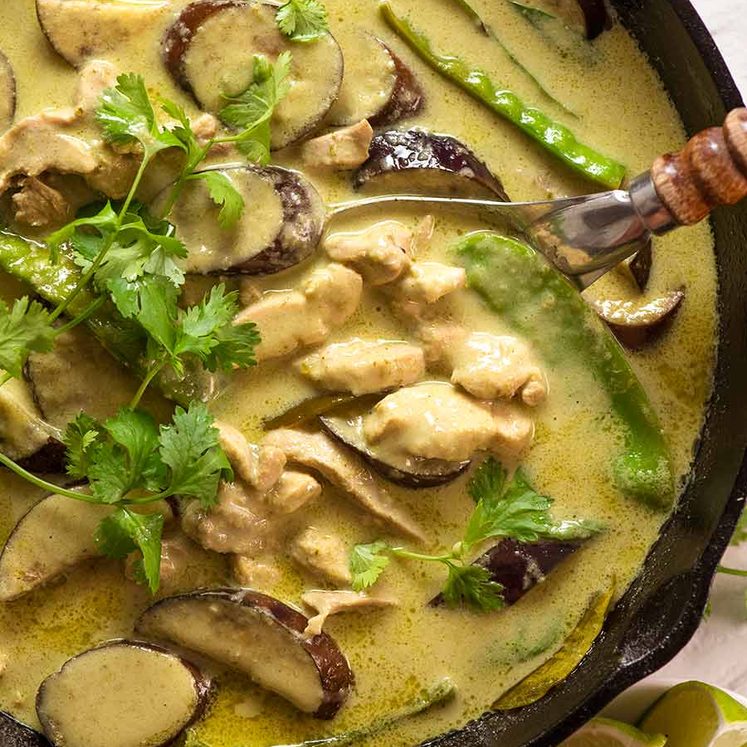

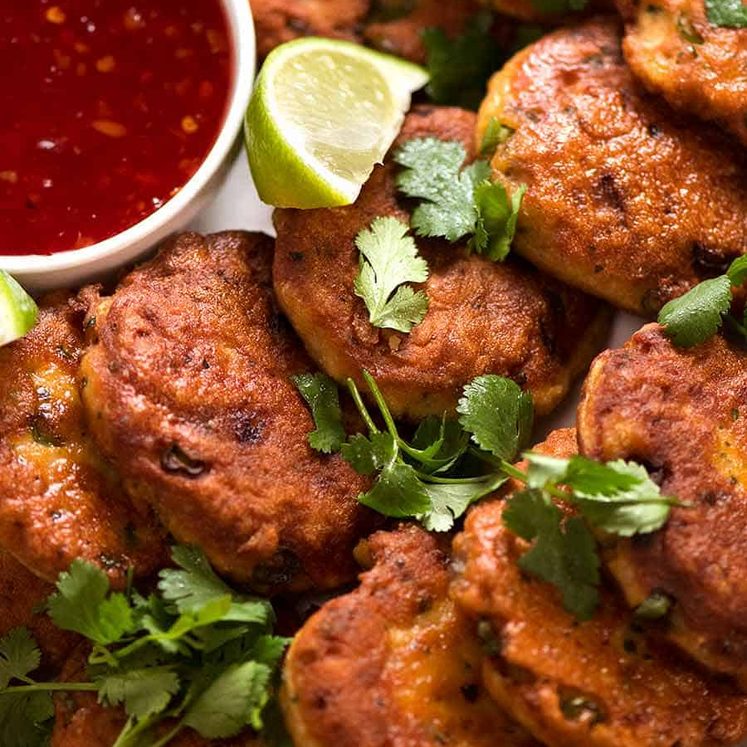
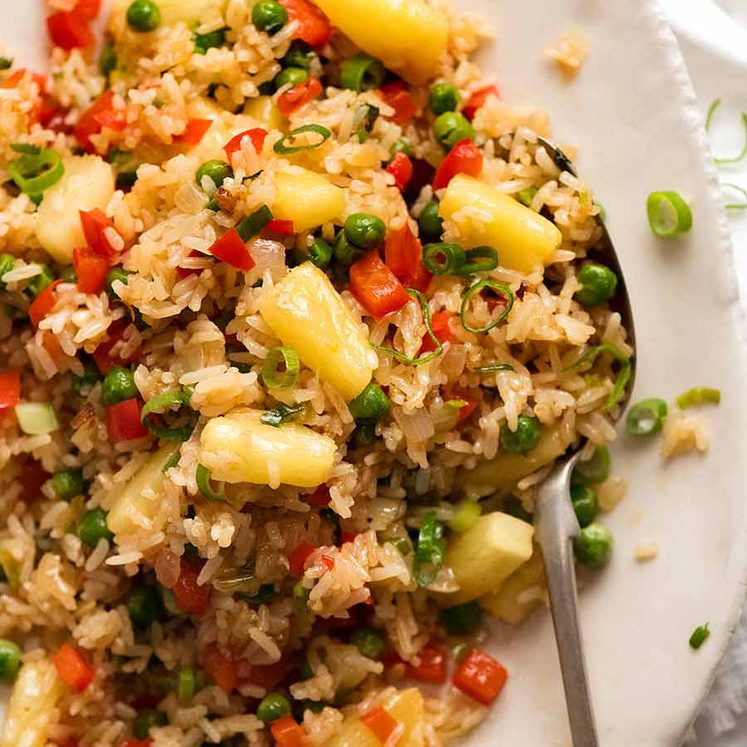
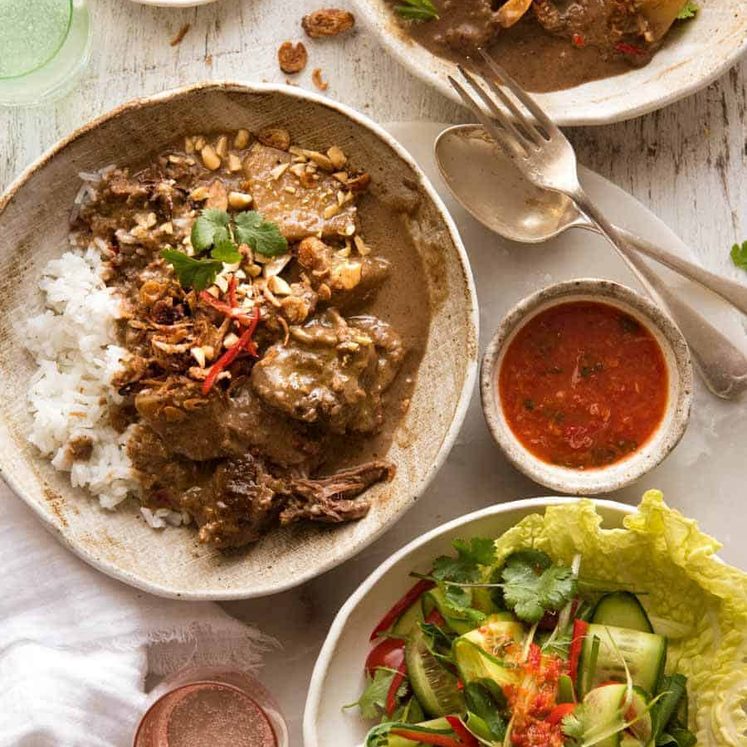

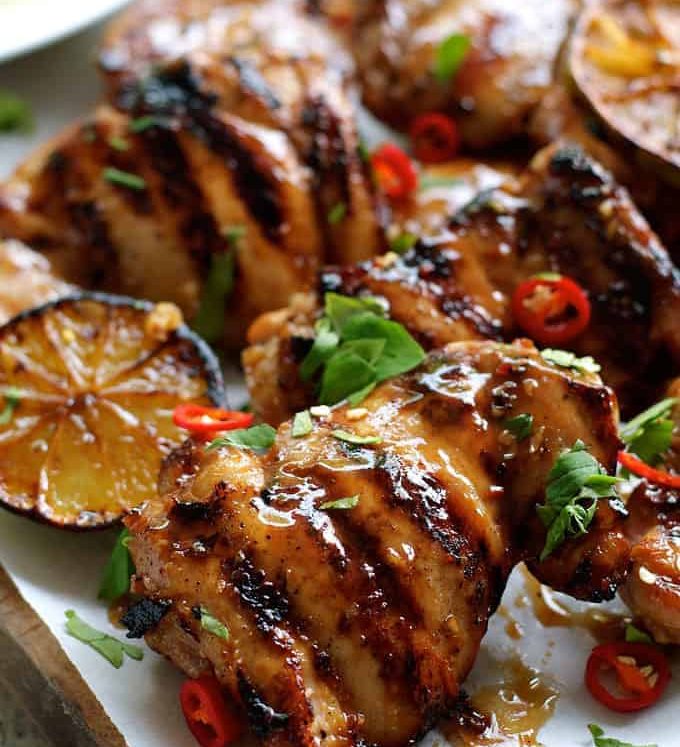
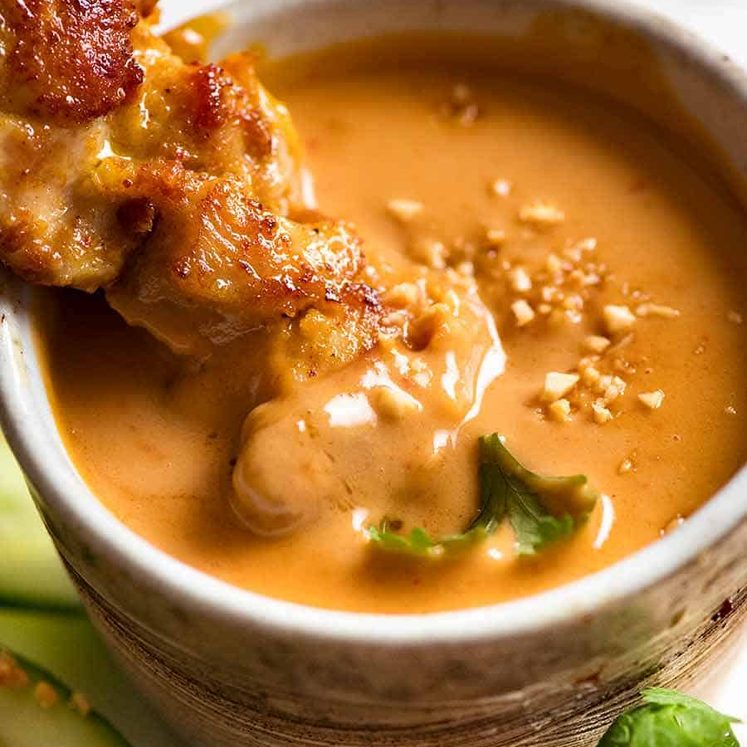
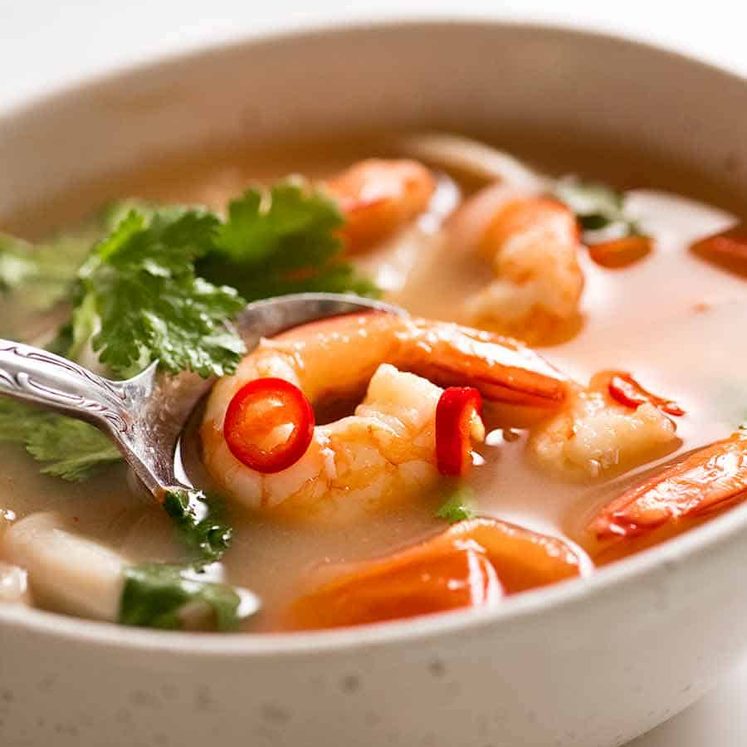
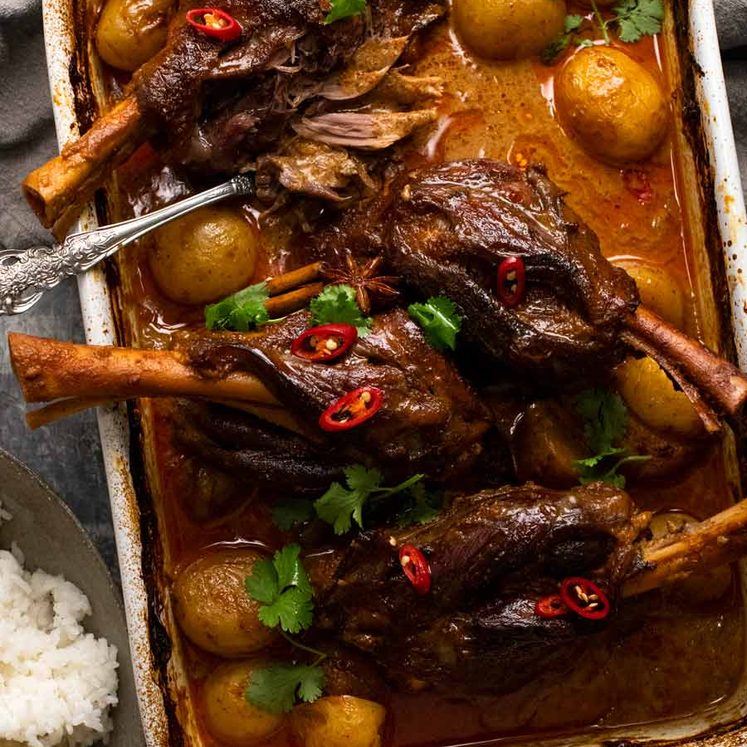
Made this with a heap of extra veggies as we love our veggies. We just have to increase the volume of sauce to account for them.
Or maybe use less noodles as they soak up a lot of the sauce.
I also need to cut my veggies a bit smaller…
The recipe is really great though. As always.we followed it to the letter the first time around and just thought it needed more veg and less noodles.
I have made this dish three times within the last couple of weeks! So yummy and fast!
Was delicious!! And so easy to make. I also tried it a second time with salmon instead of chicken & added red bell peppers, it was SO GOOD!!!
2 thumbs up with 2 and 3 serves from the 4 year old grandson. Last night was nasi goreng and tonight was pad see ew. Been told to put both on high rotation, but everyday I find something new and interesting to cook from you. Thank you. And thanks also to everyone for all the helpful hints, particularly with the noodles tonight.
Yummy!!!!
I have arthritis, can’t have sugar and the oster sause has sugar, Bought fish sauce, and can add Agave/Maple/Honey, also use Coconut Amino instead of Soy. Any suggestions on how to get the sauce to taste good?? waiting to hear?
Hi Monica, I’m not sure if the mushroom based oyster sauce has sugar – that could be an option? N x
Love love LOVE this recipe! We’ve probably made it ten times. Agree with the other commenters though, we quadruple the sauce now and find that to be perfect. We use baby boy choy, broccoli, and tofu. DELISH.
Hi there, just wondering if you use Chinese or Thai oyster sauce – I hear they have different flavors.
Hi Caren, I use Chinese, I haven’t actually directly compared but I feel like they would be very similar – N x
Got a two thumbs up on my first try. 🙂 It really helped that I took time to scan the comments and take note of how others did theirs. Used snow cabbage and canned shiitake mushrooms, and added sweet basil. And I undercooked the noodles so they wouldn’t get clumpy. 🙂
This turned out great! I loved the flavour of the sauce. I used spinach, mushrooms and chicken. I couldn’t find the same brand of rice stick noodles in the grocery store (found thinner rice stick noodles instead) but it still tasted good! Also put a bit of Sambal Oelek sauce on it before eating.
Another winning flavour combo. I just had a question about the noodles. Mine always clump together and go really claggy and gross. Any clues what I’m doing wrong? I pre-cook as per the recipe and even use the same brand. As soon as I toss together…gluey mess!
Happened to me in the past. Do not fully cook your noodles. They should be slightly undercooked. My noodles are always a little less than al dente. Therefore, they finish cooking in the meal and don’t lump up and become a clumpy mushy mess. Whenever I follow the instructions on the sheet and cook it at the lower end of the recommended cooking time, I have this problem. It is better to have them slightly chewy, than a mushy mess. However, I am no expert…just a home cook whose family loves thai dishes and I make rice noodles often in pad thai and other thai dishes. I hope this helps!
Just made this & it turned out amazing! Just like restaurant! We made sure not to fully cook the noodles prior to tossing it in the sauce with the rest of the ingredients since I prefer my noodles on the chewier side. Definitely bookmarked to make again and again in the future! Thanks for the delicious recipe!
Absolutely LOVE this recipe. I love Pad See Ew and had been trying to find the perfect one at Thai restaurants and low and behold the best one is the one I have made myself from this fabulous recipe! I serve it with panfried broccoli and cook it with Pak Choy (or similar). Also always sprinkle it with spring onions to finish. Deelish! Thanks Nagi
Delicious! Quick and easy. I used fresh noodles and found pork!
Im not sure what I was smoking when I asked the question about the fish sauce. That’s nowhere in your ingredients. Sorry but I’m still curious about the sweet soy sauce instead of the dark soy sauce. Also, could I add basil to this recipe?
I highly recommend adding basil to this recipe. If you have Thai basil it’s best, otherwise regular basil is still good!
I’m going to make this tonight but I couldn’t find dark soy sauce, will oyster sauce work? Also I didn’t get the fish sauce either, can I omit it? I did get sweet soy sauce so could I use that instead of dark soy sauce and sugar?
This was fantastic! I did have to use regular broccoli cut into very small pieces and instead of chicken, I used beef strips (like for fajitas). I got the fat rice noodles from an asian market and they are soooo much better than the ones from the regular grocery store. We both loved the flavor and can’t thank you enough for sharing this. Super quick and easy to make. I am becoming a good cook!
Thanks Nangi for sharing this recipe. My family loved it! Very easy steps to follow.. another great meal recipe to add to my recipe book. Many thanks
Great recipe. I swapped broccoli for green onions but wanted to use Napa cabbage. Used pork. It chicken would’ve been better. Added fish sauce. Topped w cilantro, Asian pepper sauce and chopped peanuts. Yum! A new staple!
I cooked this and it came out really salty… Followed the measurements exactly so not sure what happened?
Hi Lana, sorry you had issues here, can I ask what size tablespoon you used? N x